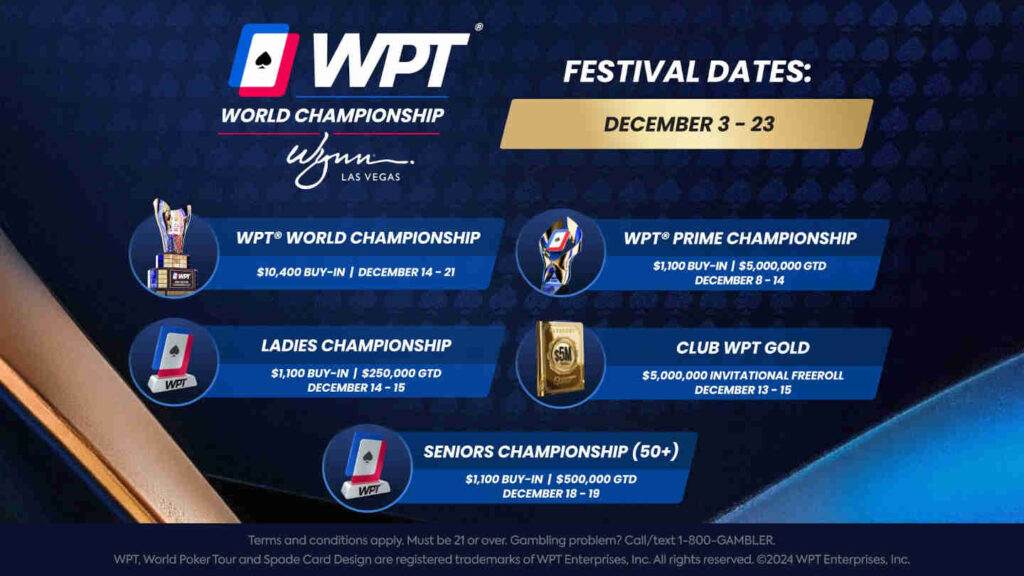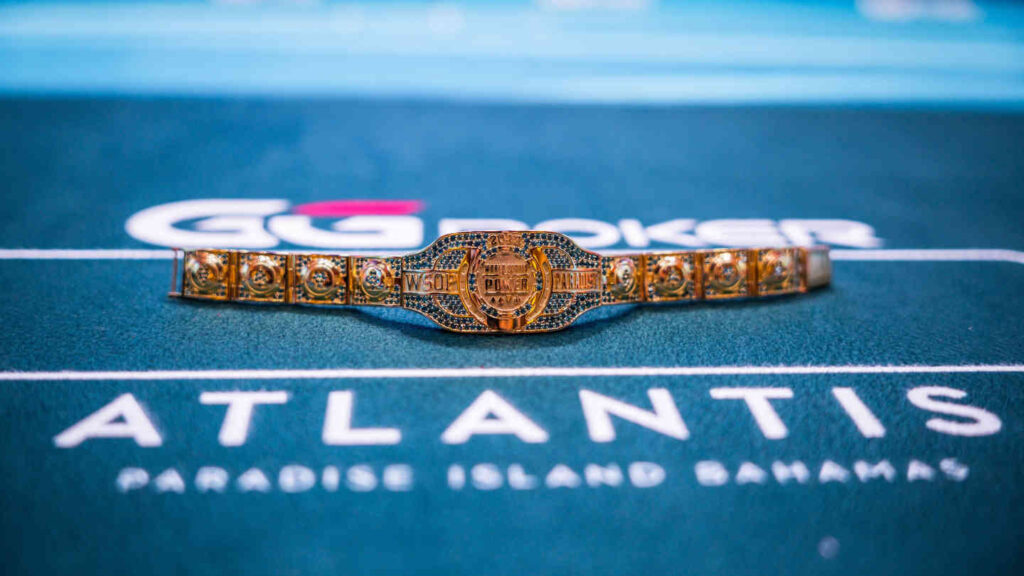The World Series of Poker Main Event is the most famous poker tournament in the world. With four starting days from July 2-5 and even the option to enter early on either of the Day 2s, there are lots of opportunities to try your luck and join thousands of other poker enthusiasts looking to climb poker’s greatest mountain.
While showing up with $10,000 in your pocket is the fast-track to the registration line, there are many satellites to the Main Event running online on either WSOP.com or GGPoker and there will also be live satellites on-site at Paris/Horseshoe this summer.
These will vary widely in entry fee, field size, structure and format, starting stack, and number of seats awarded, so make sure to do your homework before buying in.
Buying Into the Main Event
You can buy in in a variety of ways as well, from wiring money to the cage, loading your online WSOP Tournament Account in advance, paying with a credit card or cashier’s check, cold hard cash, or even chips from the host casino.
Paying in cash or chips will avoid a transaction fee, but you can’t use the kiosks throughout the property and must instead wait in the registration line, so choose your timing wisely and plan to register during off-peak hours like later at night.
The main registration counter is in the Champagne Ballroom, and is open around the clock.
Coming Up With Your Game-Plan
However you get to the Main Event, you’ll start with 60,000 chips whether you buy in on a Day 1 or a Day 2. You can only enter once, though: this is a freeze-out tournament, which means no rebuys allowed, so decide carefully.
Buying in on Day 1 gives you the chance to play 300 big blinds deep, and the event’s unique two-hour levels mean that you stay deep for a long time: even if you buy in on Day 2 you still start the day with 75 big blinds, which is more than enough to cause some trouble.
There’s more to it than that, though. Last year, the Main Event ran for 10 playing days over two weeks, which when combined with almost 13 hour days at the table, means that getting some breaks in the action to rest and recuperate is crucial. Players from
Days 1A, 1B, and 1C all come together to play Day 2ABC the day after Day 1D, which plays its own Day 2D just 24 hours later.
The fields then combine on Day 3, which means that depending on which day you buy in, you might get more or fewer days off, a few days off in a row, or none at all.

Buying in on Days 1A 1B or 1C mean that you get days off for 1D and 2D and you enter Day 3 only having played one out of the last three days, feeling rested and relaxed. Buying in on 1D would give you day 2ABC off but then you play Day 3 directly after Day 2D, with one fewer day of revitalization.
You could buy in on a Day 2, but even with almost 13 fewer hours on the felt, a marathon still awaits you.
Once the fields merge on Day 3, everyone plays down to a final table over the next week or so, with a day off for the remaining 9 players to prepare for the biggest game of their lives. Every day of play begins at noon, other than the final table days which start at 1:30pm.
The money bubble is likely to burst around the start of Day 4 so having your wits about you for this stretch of the tournament can be pivotal to your ROI. Not only is the prize for making the money about $15,000 but once other players start busting, laddering up in the tournament payjumps can be worth thousands of dollars at a time.
If you make it this far, you are going to be excited and sleep won’t come easy: give yourself your best chance at success by setting your playing schedule carefully and getting as much rest as you can beforehand.
Important Need-to-Know Information
Before you show up to play, remember to make sure you have your identification, your tournament registration slip, and your Caesars Rewards card. You’ll also need to get your ID validated by the WSOP if this is the first tournament you are playing this Series.
60,000 chips and two-hour levels make for a luxuriously long and relaxed Day 1, and even Day 2 feels deep. Along with the $10,000 you need to play, these longer levels are one of the special factors that make the WSOP Main Event stand out from the crowd.
There is a 20-minute break every level change, which means the blinds stay the same for the entire time you are playing between breaks, which means fewer times recalibrating your stack and the stacks of your opponents from chips to big blinds.

Every day also has a dinner break, starting around 6:40 and running for 75 minutes. There are many places nearby to find a meal if you don’t mind waiting in line. And if you do mind waiting in line, make a plan for when to use the restroom throughout the day, as the lineups for the ones closest to the tournament area will have the longest lines you’ll see in Las Vegas on this trip.
The Main Event starts deep but eventually you are going to get short-stacked. The World Series of Poker uses the ‘big blind first’ format so even if you get down to between 1-2 big blinds you’ll still have a shot at doubling or even tripling up to a stack that, as small as it is, can still ladder up.
Here are some other rules you should know: Phones are allowed at the tables, but not while you have cards in front of you. Consulting charts or strategic materials or other kinds of Real-Time-Assistance is strictly forbidden at the tables, but permitted outside the tournament area.
Personal card protectors are allowed, but must only obscure at most a small portion of your cards. Taking photos of exciting moments like a pivotal poker hand is permitted but filming video is discouraged. If you have a question, ask the dealer or a floor staff, they are there to help.
At the end of each day, each surviving player fills out a slip and puts all their chips in a sealed bag, which will be waiting for them at their assigned table the next morning.
The tournament area will be sealed until roughly 15 minutes before the next day’s action begins, so don’t bother getting there early. Rest up, sleep while you can, and climb that mountain.


